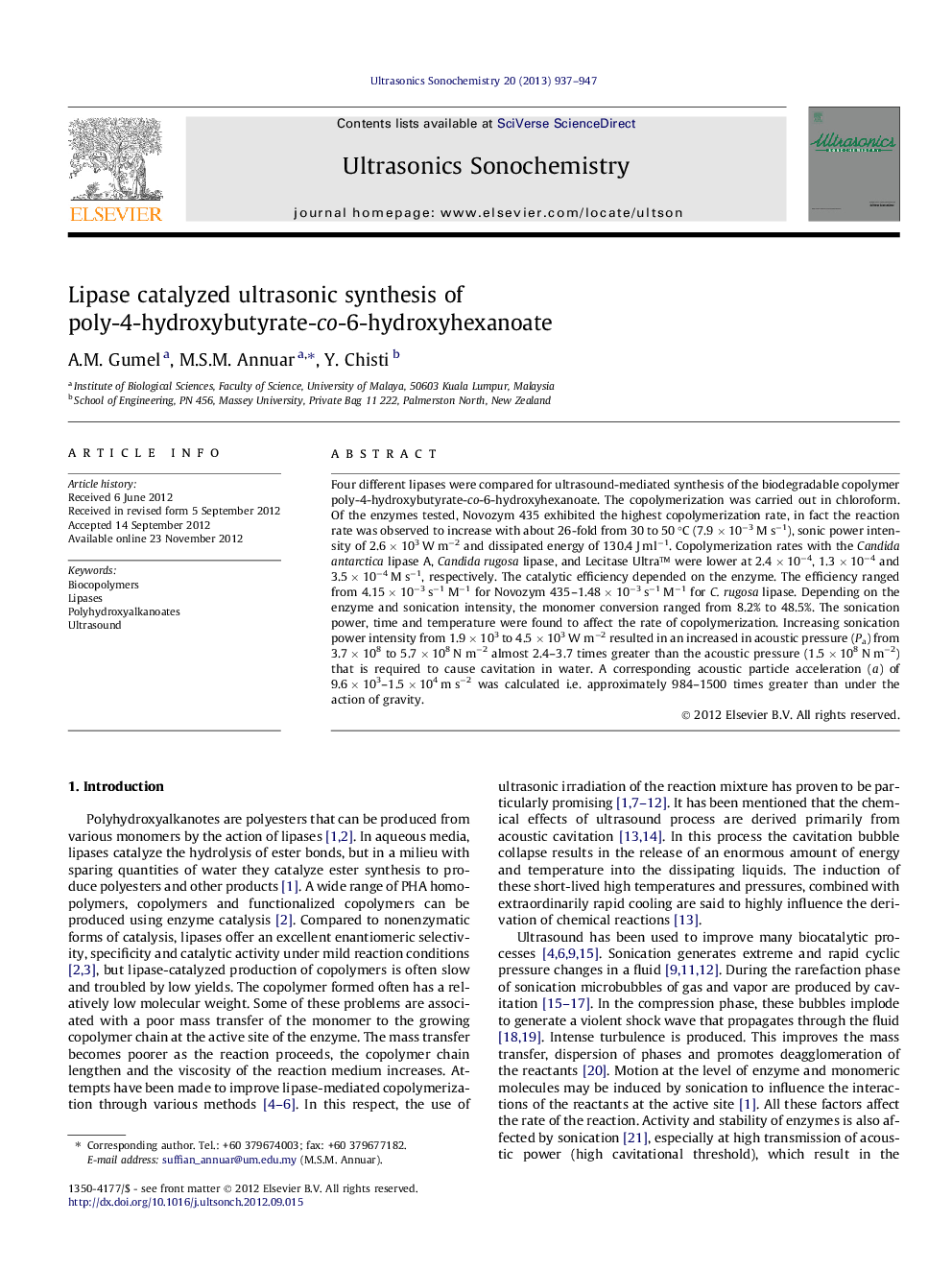| Article ID | Journal | Published Year | Pages | File Type |
|---|---|---|---|---|
| 1265280 | Ultrasonics Sonochemistry | 2013 | 11 Pages |
Four different lipases were compared for ultrasound-mediated synthesis of the biodegradable copolymer poly-4-hydroxybutyrate-co-6-hydroxyhexanoate. The copolymerization was carried out in chloroform. Of the enzymes tested, Novozym 435 exhibited the highest copolymerization rate, in fact the reaction rate was observed to increase with about 26-fold from 30 to 50 °C (7.9 × 10−3 M s−1), sonic power intensity of 2.6 × 103 W m−2 and dissipated energy of 130.4 J ml−1. Copolymerization rates with the Candida antarctica lipase A, Candida rugosa lipase, and Lecitase Ultra™ were lower at 2.4 × 10−4, 1.3 × 10−4 and 3.5 × 10−4 M s−1, respectively. The catalytic efficiency depended on the enzyme. The efficiency ranged from 4.15 × 10−3 s−1 M−1 for Novozym 435–1.48 × 10−3 s−1 M−1 for C. rugosa lipase. Depending on the enzyme and sonication intensity, the monomer conversion ranged from 8.2% to 48.5%. The sonication power, time and temperature were found to affect the rate of copolymerization. Increasing sonication power intensity from 1.9 × 103 to 4.5 × 103 W m−2 resulted in an increased in acoustic pressure (Pa) from 3.7 × 108 to 5.7 × 108 N m−2 almost 2.4–3.7 times greater than the acoustic pressure (1.5 × 108 N m−2) that is required to cause cavitation in water. A corresponding acoustic particle acceleration (a) of 9.6 × 103–1.5 × 104 m s−2 was calculated i.e. approximately 984–1500 times greater than under the action of gravity.
